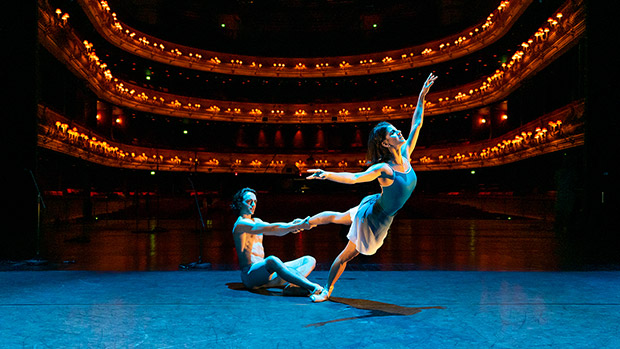
© Ruairi Watson, courtesy the Royal Opera House. (Click image for larger version)
Royal Opera House / Royal Ballet
Live from Covent Garden: Third Streamed Concert
including pas de deux from Within the Golden Hour and Concerto
★★★★✰
Streamed from Royal Opera House, London
27 June 2020
Show details incl streaming link
See more ROH Streaming Performances
www.roh.org.uk
The third (and last) concert from the stage of the Royal Opera House was more uplifting than the previous two, with a wider range of performers and offerings. The set-up was more informative, with informal interviews while the stage was being prepared for the next item. This time, it was openly acknowledged that the dancers’ contributions were pre-recorded earlier on the same day. Unlike the singers and musicians, who faced inwards towards the conductor, Antonio Pappano, the dancers projected outwards to the empty seats of the auditorium.
As Kevin O’Hare, director of the Royal Ballet, said in his interview with the presenter Katie Derham, this is a stage that the dancers know so well and feel so comfortable in. ‘We are the ones who make this building what it is’, affirmed Mayara Magri in her interview. Royal Ballet dancers spend most of their days in the Opera House, and many of their nights performing on its stage. The opera chorus and guest singers are not regular inhabitants. The Jette Parker singers in the third concert are more familiar with the Linbury (studio) Theatre, apart from those who have taken part in main stage opera performances.
The third concert gave five singers on the Jette Parker Young Artists Programme the chance to make themselves known to a wider audience. The programme gives rising professional artists the opportunity to develop their careers through intensive preparation and experience with the Royal Opera. (The nearest equivalent for talented ballet school graduates is the Aud Jebsen Young Dancers Programme.) The singers had the lions’ share of the concert, with just two pas de deux by Royal Ballet couples, Matthew Ball and Mayara Magri, Reece Clarke and Fumi Kaneko.
O’Hare made the point that the Royal Ballet’s contributions have involved choreography by artists closely associated with the company: in this concert, Christopher Wheeldon, Artistic Associate, and Kenneth MacMillan, former Resident Choreographer and artistic director. The music has been played live on stage by ROH Orchestra members, albeit in reduced numbers. These criteria would have precluded the familiar ‘party pieces’ that dancers prepare for appearances in galas. In any event. duets had to be performed by couples already living together, keeping fit by exercising in their kitchens and deserted outdoor spaces, as clips from social media showed during interview sections.
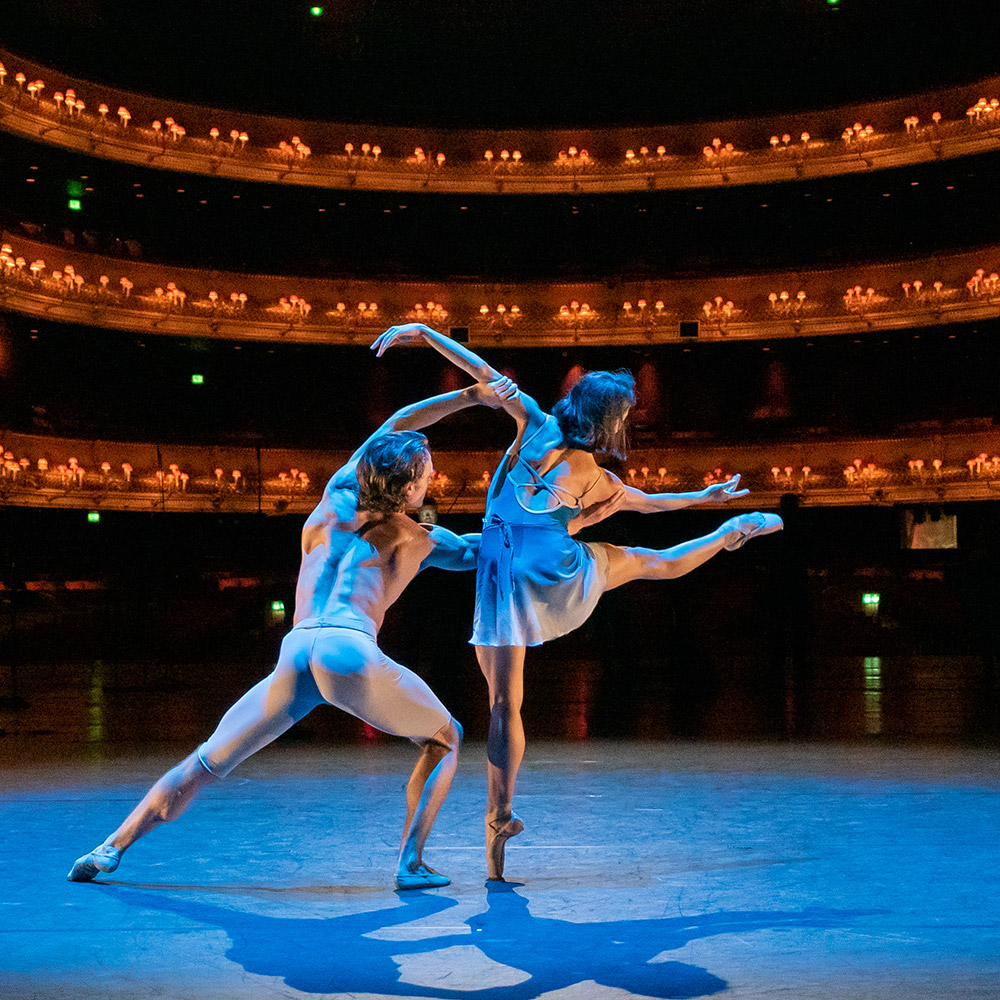
© Ruairi Watson, courtesy the Royal Opera House. (Click image for larger version)
Magri and Ball revealed that they’d had just five days to learn the pas de deux from Wheeldon’s Within the Golden Hour, having never performed it before. It is one of four contrasting duets in an abstract ballet created for San Francisco ballet in 2008 and later performed by the Royal Ballet in diaphanous costumes designed by Jasper Conran. Here the pas de deux was danced in simple practice dress, with Ball bare chested. The performance was dedicated to the Italian composer, Ezio Bosso, who wrote most of the score for Within the Golden Hour and who died in May this year, aged just 48.
The pas de deux is an odd one, usually described as ‘sculptural’, to plangent strings that make it seem spiritual. The couple appear intimate, dreamingly loving. She repeatedly curves away from him, trusting him as her anchor. But when he lowers her onto the floor and steps again and again over her sprawled limbs, what does that tell us about their relationship? He cradles her thighs so that she sinks into his body, resting her cheek onto her hands like a child. He drags her backwards, sitting on the ground with her knees apart, feet flexed, before yanking her up into a deep plié in second, which he then takes alongside her. These are ugly positions in in the context of a neo-classical pas de deux – an ungainliness to which Wheeldon often resorts in otherwise lovely duets, for no apparent reason.
The brief pas de deux ends with a manoeuvre in which she swoons forward, head almost touching the floor, while he, seated, hangs onto her ankle. They conceal the muscular effort required to haul her back until she lies on top of him, both facing upwards as the strings die away. Their encounter seems very affecting unless you look at it in detail, wondering what on earth it is about.
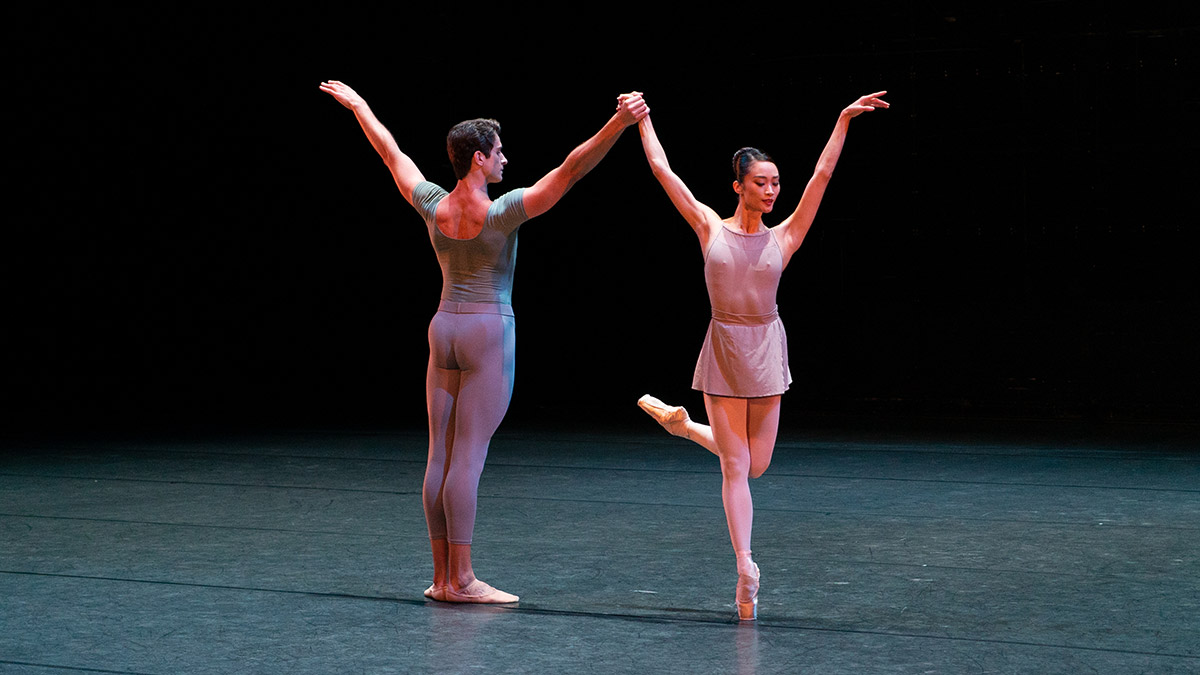
© Ruairi Watson, courtesy the Royal Opera House. (Click image for larger version)
The same might be said of MacMillan’s Concerto pas de deux, except that it is more evidently a response to its music, the andante movement from Shostakovich’s Piano Concerto no 2, played here by Kate Shipway. Kaneko and Clarke have both performed Concerto with the Royal Ballet, but never together. The pas de deux is a kind of ritual, in which the woman rarely acknowledges the man’s presence. She takes his offered hand without looking at him as though he’s merely a barre for support. He enables her constant circling movements to become more and more expansive as he lifts and counterbalances her, remaining impassive throughout.
Clarke appeared a beacon of reassurance on the darkened stage. (At last, a male dancer with a T-shirt covering his torso). Kaneko was absolutely precise, arabesque leg at 90 degrees, without ever yielding to sensuality. The pas de deux is based on different ways of stepping on pointe, echoing the notes of the piano. Its motif of almost mechanical ballet exercises becomes an implied expression of yearning, as the woman surges upwards at arms’ length. The unclassical oddities are not ungainly: she stretches horizontally across the man’s knee and then leans against his outstretched arms; he holds her supporting foot as she suspends herself down his back. Only at the very end does she meet his eyes, turning her head at the last moment in a supported arabesque.

© Ruairi Watson, courtesy the Royal Opera House. (Click image for larger version)
Both pas de deux were supremely well danced, a tribute to the performers’ fitness in lockdown conditions. O’Hare announced that the Royal Ballet was hoping for a phased return into the company’s studios from 14th July onwards, the dancers training for at least six weeks before seeing what they might perform. He said there was a range of repertoire in waiting, with new ballets as well as the classics, but he didn’t predict when performances might take place. Pappano was similarly cautious about the opera’s return: ‘We have so many plans, but we don’t have the information to implement them. Hopefully, we can get back to normal with an audience in the autumn’.
To end the final ‘live’ concert on a rousing note, he conducted the singers and orchestra in the ‘Brindisi’ drinking song from La Traviata, urging the audience watching online to sing along. One of the pleasures for Royal Opera House spectators who can only glimpse the tops of the heads of players in the orchestra pit has been seeing them full length, facing the camera, on screens at home. Now we know what those splendid leading violinists, Vasko Vassilev and Sergey Levitin, look like – and what a dancer Maestro Pappano is in action.












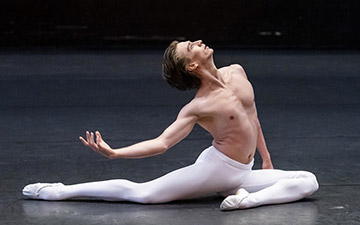

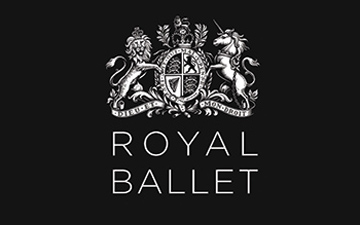

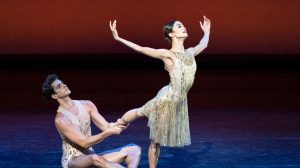
You must be logged in to post a comment.